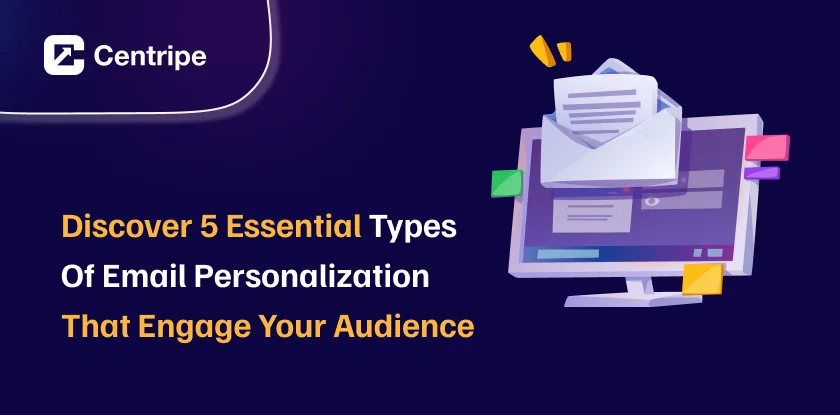Your audience receives over 100 emails a day. Most get ignored. Why? Because they all sound the same.
“Hey there,” “Limited time offer,” “Don’t miss this,” boring.
It means using what you know about your subscriber, such as their name, what they clicked on, where they’re from, or what they’ve bought, to send emails that feel more like a conversation than a broadcast.
Studies show that email personalization generate 6x higher transaction rates, and emails with personalized subject lines are 26% more likely to be opened.
Let’s look at 5 types of email personalization your audience wants to open, read, and click.
What is Email Personalization
Email personalization means making your email marketing feel more personal and special to each person based on the information you know about them. Like their name, where they live, and what they recently viewed, or how often they visit your website or use your app.
There are different levels of personalization. The basic level might just add the person’s name to the subject line.
Better emails can provide customization of the whole content, including the location, gender, previous purchases, or desires.
Why is it important? Because email personalization feel more relevant. Rather than a spam message, individuals receive the email messages that are specially addressed to them.
Research indicates that emails using customized subject lines have a far higher open rate and can generate a lot more income as compared to messages that lack a personal touch.
Types of Email Personalization
1. Basic Personalization
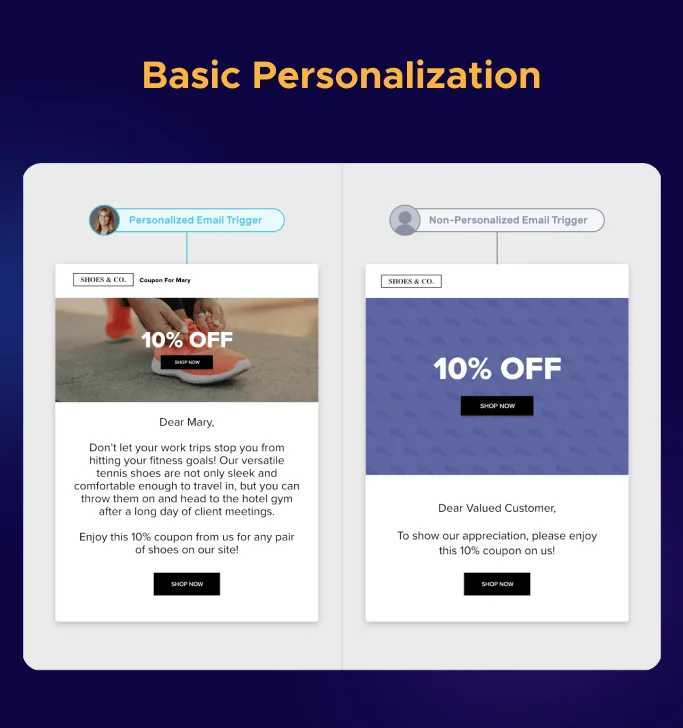
Add a friendly touch to your emails. It’s simple, but it works.
You can start by:
It also helps you in:
- Using the person’s name
- Writing a subject line that feels personal
- Showing offers based on their interest
- Sharing content they’ll care about
- Mentioning something they’ve done before (if you know it)
These little things do not sound like much, but they make your mail stand out among many other emails in the inbox. That is, the personalized subject line will trigger a person to open the mail, and when someone cannot open the mail, then all the other details are pointless.
Even just using their name or showing them the right product shows that you’re paying attention.
2. Image Personalization
Getting an email with your name is nice, but seeing an image made just for you? That grabs attention.
Tools like Lemlist made this popular by adding things like a user’s name or face into fun email images.
You can also show product images based on what someone viewed on your site, or even switch images based on location, like showing a New York skyline to someone in NYC, and palm trees to someone in LA.
This kind of dynamic email content helps make your message feel more customized and engaging.
3. AI Email Personalization
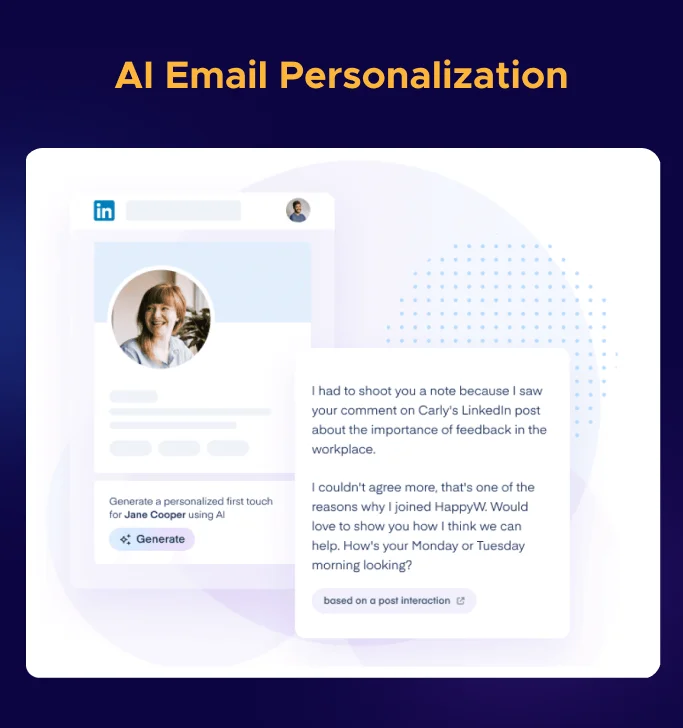
This kind of personalization uses artificial intelligence to perform the difficult task on your part.
Instead of manually picking what to show each person, AI tools are able to search through a subscriber’s behavior, interests, or even job role, and can auto-fill the email with content most suited to him or her.
For example, let us say you have access to their LinkedIn profile, and on this basis, perhaps you can tailor the message to things such as their company, their job title, and what is trending currently in their industry, but this is done all automatically without you having to manually do it.
This approach is part of modern personalization best practices, making large-scale targeting feel one-on-one.
4. Behaviour Based Personalization
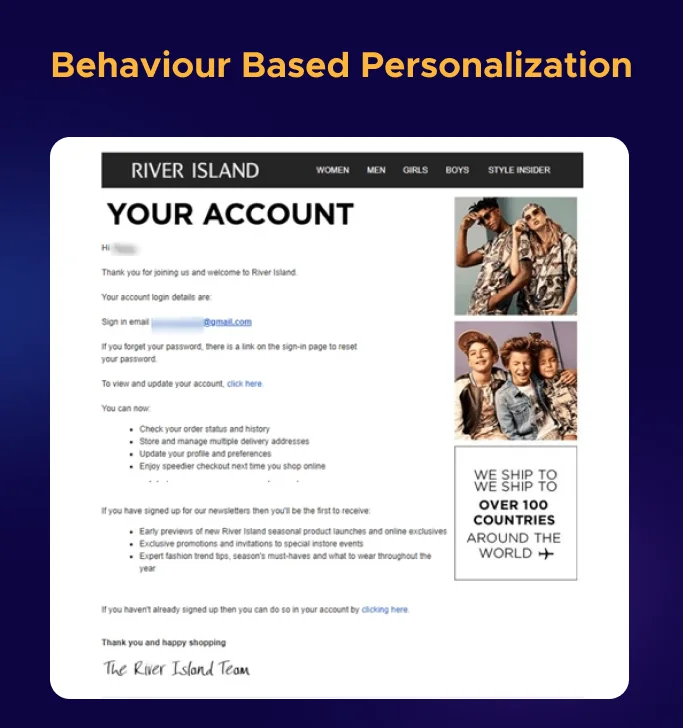
Such kind of personalization is based on the actions of your customer, such as what they explore, click, or abandon.
Hypothetically, there is a person who places clothes in his or her cart but leaves without purchasing them. You can do a follow-up message by offering a small discount to get them back instead of forgetting them.
It’s all about reacting to their actions in real time and giving them a reason to come back and complete what they started.
5. Segmentation Personalization
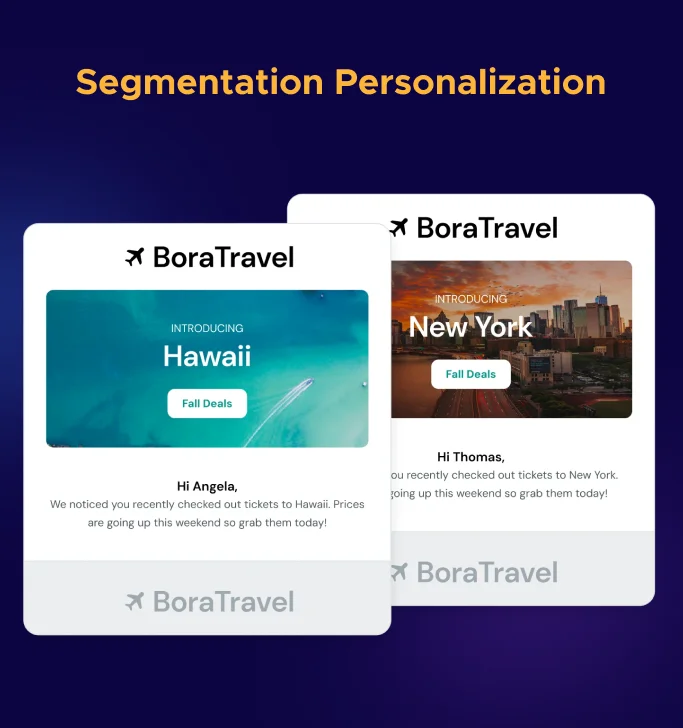
This method is about sending different emails to different groups of people based on who they are.
As you can see, you can make up various versions of your email in terms of new subscribers and your loyal readers.
It is also possible to target groups of people based on attributes such as location, job type, or company size, and make your message personal.
It’s a smart way to keep your emails targeted, and it often leads to better engagement because you’re not treating everyone the same.
2 Examples of highly effective email personalization to inspire you
1. Spotify – Your Year in Music (Spotify Wrapped)
Spotify’s “Wrapped” campaign is one of the most talked-about email personalization experiences every year.
Each December, Spotify sends users a recap of their year, top songs, favorite artists, total minutes listened, and even quirky stats like “You were in the top 2% of Taylor Swift listeners.” It’s not just fun, it’s deeply personal, memorable, and highly shareable.
Spotify transforms user data into a celebration of their musical likes, and thus, makes every individual feel noticed and proud of it.
2. Amazon – Product Recommendation Emails
Amazon sends personalized product suggestion emails that are scarily accurate, and that’s what makes them work.
These emails are based on your recent views, purchases, and search history. An example could be when you recently viewed wireless earbuds, Amazon would mail you something such as the subject line of: Customers who viewed this also bought… with a list presented to you.
Amazon uses this kind of personalization based on behavior on a massive scale ensuring each and every email grabs your attention as though the advertisement was done specially to you.
Conclusion
Personalized emails is not a fashion; it’s what makes your emails feel real, useful, and worth opening.
People will be more likely to pay attention, believe, and act when something you do is more closely related to what a person really considers important.
Here’s what to focus on:
- People give more clicks, responses, and sales through personal touches
- Segment your audience smartly so each group gets what’s most relevant to them
With the right email marketing strategy, personalization is no longer difficult, and the results speak for themselves.
